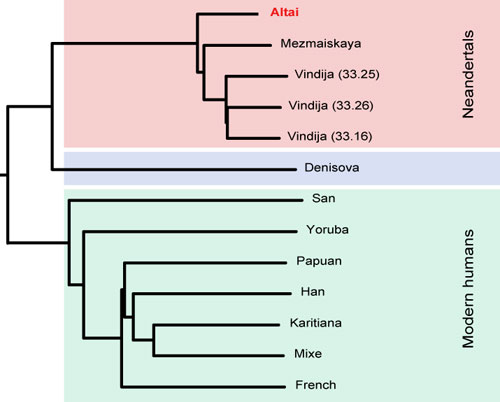Ancient Genome Browser
A high-quality Neandertal genome sequence

The genome sequence was generated from a toe bone discovered in Denisova Cave in southern Siberia in 2010. The bone is described in Mednikova (Ethnology & Anthropology of Eurasia 2011. 39: 129-138).
DNA sequences were generated on the Illumina HiSeq platform and constitute an average 50-fold coverage of the genome. 99.9% of the 1.7GB of uniquely mappable DNA sequences in the human genome are covered at least ten times.
Contamination with modern human DNA, estimated from mitochondrial and nuclear DNA sequences, is around 1%.
The figure shows a tree relating this genome to the genomes of Neandertals from Croatia, from Germany and from the Caucasus as well as the Denisovan genome recovered from a finger bone excavated at Deniosva Cave. It shows that this individual is closely related to these other Neandertals. Thus, both Neandertals and Denisovans have inhabited this cave in southern Siberia, presumably at different times.
Use of the genome sequence data
All data is made freely available. However, we ask users to observe the Ft. Lauderdale principles, which entitles the data producers to make the first presentation and publish the first genome-wide analysis of the data. The data can be used freely for studies of individual genes or other individual features of the genome.
Alignments for all Neandertal sequences to the human genome are available in BAM format. [Download here]